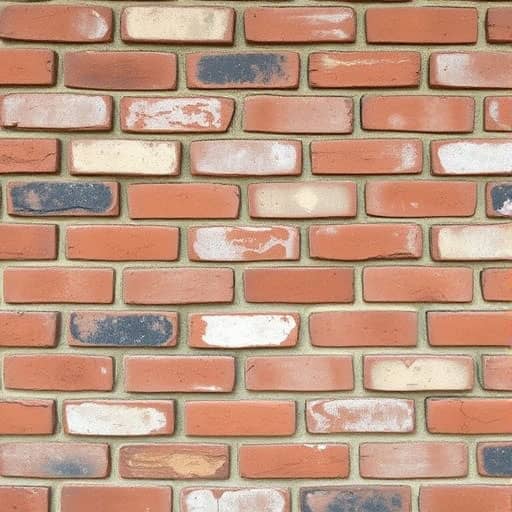Can Old Bricks From an Old Building Be Reused for New Construction?

When constructing a new building or renovating an existing one, the question of whether materials from older structures can be repurposed is an essential consideration. Among these materials, old bricks are often examined for their potential to be reused.
Why Reuse Old Bricks?
Reusing old bricks offers multiple advantages, making it a sustainable and practical option for construction. Here are some of the key reasons why repurposing old bricks is worth considering:
- Environmental Benefits: By recycling bricks, we reduce the demand for new materials, thereby minimizing the environmental impact of brick production. Brick manufacturing consumes significant energy and emits carbon dioxide, so reusing bricks helps conserve resources and reduce emissions.
- Cost Savings: Old bricks are often available at a lower cost than newly manufactured ones, especially when sourced directly from demolished structures. Additionally, they reduce disposal costs for old building materials.
- Aesthetic Appeal: Bricks from older structures often possess a unique, weathered charm that cannot be replicated with modern production techniques. These vintage bricks are perfect for projects requiring a rustic or historical appearance.
- Structural Durability: Many old bricks are made of high-quality materials and may even be stronger than some modern bricks, especially if they were fired at higher temperatures.
How to Identify Bricks Suitable for Reuse
Not all bricks from old buildings are fit for repurposing. A thorough assessment of their condition is essential to determine their suitability. Below are the key factors to consider:
- Visual Inspection: Look for cracks, chips, or signs of excessive wear. While minor damage can sometimes be repaired, severely damaged bricks may compromise the structural integrity of your project.
- Strength Testing: Older bricks may weaken over time, especially if they were exposed to extreme weather conditions. Conduct compression tests to ensure they meet the strength requirements of your project.
- Mortar Removal: Old bricks often have remnants of mortar attached to them. Check whether the mortar can be removed without damaging the bricks. Specialized tools or chemical solutions may be required for this process.
- Water Absorption Rate: Bricks with high water absorption rates are more susceptible to frost damage. Perform water absorption tests to identify bricks that can withstand environmental challenges.
Methods for Reusing Old Bricks
To effectively incorporate old bricks into new construction, proper handling and preparation are necessary. Here are the steps involved:
- Salvaging the Bricks: During demolition, bricks must be removed carefully to avoid damage. Use manual tools like chisels and hammers instead of heavy machinery to ensure maximum recovery.
- Cleaning the Bricks: Removing old mortar is a crucial step. Options include:
- Manual Cleaning: Use wire brushes, chisels, or grinders to scrape off mortar.
- Chemical Cleaning: Soak the bricks in a mild acid solution to dissolve stubborn mortar.
- Pressure Washing: Ideal for larger batches of bricks but should be used cautiously to prevent damage.
- Sorting and Grading: Once cleaned, sort the bricks by size, color, and condition. This ensures consistency in appearance and performance during construction.
- Incorporation into the New Project: When reusing bricks, consider their placement carefully. For example, bricks with minor flaws can be used in non-load-bearing walls or decorative features.

Challenges of Reusing Old Bricks
While the benefits of reusing old bricks are significant, several challenges must be addressed:
- Labor-Intensive Process: Salvaging and cleaning bricks can be time-consuming and labor-intensive, increasing the overall cost of the project.
- Variability in Quality: Bricks from older structures may vary in strength, size, and durability, complicating their reuse in certain projects.
- Compliance with Building Codes: Modern construction standards may require bricks to meet specific strength and durability criteria. Ensure that reused bricks comply with local building codes.
- Hidden Defects: Bricks that appear intact on the surface may have internal cracks or weaknesses. Advanced testing methods, such as ultrasonic scans, may be necessary to detect hidden defects.
Applications of Reused Bricks in Construction
Reused bricks can be employed in various aspects of new construction and renovation projects. Below are some common applications:
- Load-Bearing Walls: If the bricks are strong and durable, they can be used in structural walls.
- Facades and Cladding: For projects emphasizing aesthetics, old bricks add a vintage charm to facades and cladding.
- Landscaping: Reused bricks are ideal for creating garden paths, retaining walls, and decorative features in outdoor spaces.
- Interior Design: Many modern interiors use old bricks for accent walls, fireplaces, and other decorative elements, blending rustic and contemporary styles.
Sustainability and Reused Bricks
The reuse of old bricks aligns with sustainable construction practices, reducing waste and conserving resources. As we move towards a more environmentally conscious construction industry, reusing materials like bricks is a significant step in promoting circular economy principles.
By reducing the demand for new materials and decreasing landfill waste, repurposing old bricks contributes to greener building practices and a reduced carbon footprint.
Conclusion
Reusing old bricks from demolished buildings is not only a cost-effective and environmentally friendly practice but also a way to add character and history to new construction projects. By carefully assessing the condition of the bricks and preparing them for reuse, we can overcome the challenges and fully utilize their potential.
Please watch the short video tutorial for Old Bricks From an Old Building Be Reused for New Construction
